 High speed train attendants receive training in Chongqing
High speed train attendants receive training in Chongqing
 Rare rainbow clouds seen in Fujian
Rare rainbow clouds seen in Fujian
 Small bracelet going global
Small bracelet going global
 Aerial Photography: Amazing Tianshan Mountains
Aerial Photography: Amazing Tianshan Mountains
 'Animals' in 2014 World Cup
'Animals' in 2014 World Cup
 Not afraid of death
Not afraid of death
 Chen Guangbiao ads on A15 of NYT to host charity luncheon for 1,000 poor and destitute Americans
Chen Guangbiao ads on A15 of NYT to host charity luncheon for 1,000 poor and destitute Americans
 Passionate bar babies and fans feel the charm of World Cup 2014
Passionate bar babies and fans feel the charm of World Cup 2014
 US aircraft carrier docks in HK, welcomes PLA aboard
US aircraft carrier docks in HK, welcomes PLA aboard
 Graduation season: 'Take graduation photos to mark our love'
Graduation season: 'Take graduation photos to mark our love'
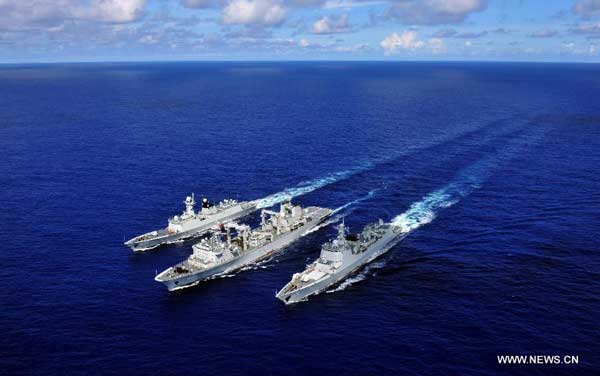 |
| The missile destroyer Haikou (R), missile frigate Yueyang and supply ship Qiandaohu(C) are seen during the supply at sea in Pacific Ocean, during the the Rim of the Pacific (RIMPAC) multinational naval exercises on June 13, 2014. After 6 days' sail, the Chinese fleet participating in the Rim of the Pacific (RIMPAC) multinational naval exercises joined naval forces from Singapore and the United States in waters off Guam on Saturday. (Xinhua/Hu Kaibing) |
The world's largest joint military exercise at sea, the 2014 Rim of the Pacific (RIMPAC) Naval exercise, will kick off in Hawaii on Thursday. It is the first time that China will have participated in the exercise. The Chinese forces include missile destroyer Haikou, missile frigate Yueyang, supply ship Qiandaohu, hospital ship Peace Ark, two helicopters, a commando unit and a diving squad, totaling 1,100 officers and soldiers. Its complement is second only to that of the host, the United States. Japan, Australia and 22 other countries will take part in the exercise.
In accordance with the consensus reached by national leaders from both China and the U.S., the Chinese navy will take part in seven programs, including artillery practice, sea security operations, and military medical exchanges. This shows that the U.S. has the will to improve bilateral military ties. According to unwritten rules generally applied in practice, a country does nto normally join in the actual programs during its first participation in the exercise, and major security missions are carried out by the U.S. and its principal allies, said Zhang Junshe, a researcher at the People's Liberation Army Naval Military Studies Research Institute.
Analysts believe the US aim is to build an Asia-Pacific version of "NATO" on the basis of the traditional alliance, and ultimately dominate Asia-Pacific security affairs, while Japan, Korea, Australia and other countries want to further strengthen relations with the United States to improve their military capabilities. The goals for Canada, the United Kingdom, Norway and other peripheral participating countries are to increase foreign participation in Asia-Pacific affairs as well as gain experience and develop skills.
China's presence at the exercise will have a positive effect on relations between China and the U.S., strengthen their friendly cooperation, and help to safeguard regional peace and stability. It is also a great opportunity to broaden exchanges and pragmatic cooperation between China and other countries, and lay a good foundation for safeguarding maritime security in the future.
RIMPAC, which started in 1971, is the world's largest multinational maritime military exercise. It forms a complete set of medium-scale "sea intervention maneuvers".
The article is edited and translated from《我軍首演7課目打破演習(xí)傳統(tǒng)》, source: jinghua.cn, author: Pan Shanju
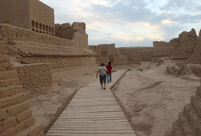 Silk Road, China's Grand Canal listed as World Heritage Sites
Silk Road, China's Grand Canal listed as World Heritage Sites Chinese 'Slumdog Millionaire'
Chinese 'Slumdog Millionaire' PKU students imitate famous paintings in real-person photos
PKU students imitate famous paintings in real-person photos Stewardesses in Brazilian soccer jerseys
Stewardesses in Brazilian soccer jerseys Puzhehei: land of idyllic beauty
Puzhehei: land of idyllic beauty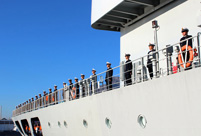 Chinese navy fleet visits Cape Town, South Africa
Chinese navy fleet visits Cape Town, South Africa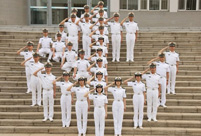 PLA naval cadets toss their hats at graduation ceremony
PLA naval cadets toss their hats at graduation ceremony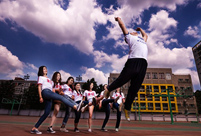 Graduation photo ideas: reliable alumnus and happy alumna
Graduation photo ideas: reliable alumnus and happy alumna Super daddies in 2014 World Cup
Super daddies in 2014 World Cup Images of Xi'an: Part one
Images of Xi'an: Part one In Pictures: Female fans of World Cup
In Pictures: Female fans of World Cup Girl takes father’s portrait to travel the world
Girl takes father’s portrait to travel the world China's top 10 representative architectures
China's top 10 representative architectures Photo story: A day of 'mini girl'
Photo story: A day of 'mini girl' Top 20 hottest women in the world in 2014
Top 20 hottest women in the world in 2014 Day|Week|Month